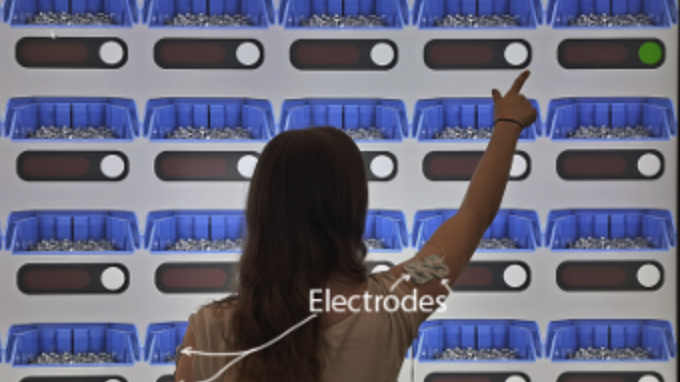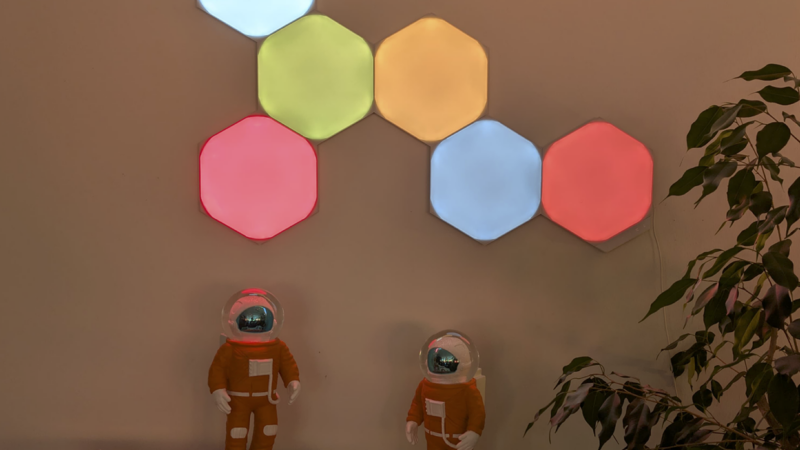We are looking forward to the 23rd International Conference on Mobile and Ubiquitous Multimedia. This year, the conference will be in Stockholm and — much like last year — we are again happy to present three contributions. We are looking forward to meeting you! Our works will be presented by the first authors Vimal and Sabine.
ShoulderTapper: Providing Directional Cues through Electrotactile Feedback for Target Acquisition in Pick-by-Light Systems
In work environments with overwhelming or insufficient visual cues, maintaining spatial awareness and accurately acquiring targets can become challenging, particularly for users facing high cognitive load, multitasking demands, or visual impairments. This study explores the effectiveness of electrotactile feedback compared to pick-by-light feedback in enhancing task performance and user experience during a target acquisition task. Eighteen participants completed target acquisition tasks under three conditions: Baseline (pick-by-light), Electrotactile Pressure, and Electrotactile Tap. A significant improvement in task completion time was found in the rightmost column of the pick-by-light grid for the Electrotactile Pressure condition. Subjective feedback indicated that electrotactile feedback significantly reduced mental demand and effort and enhanced the overall user experience compared to the baseline condition. These findings suggest that electrotactile feedback can reduce cognitive load, particularly in tasks requiring quick responses and spatial attention, offering valuable insights for the design of haptic interfaces providing direction cues.
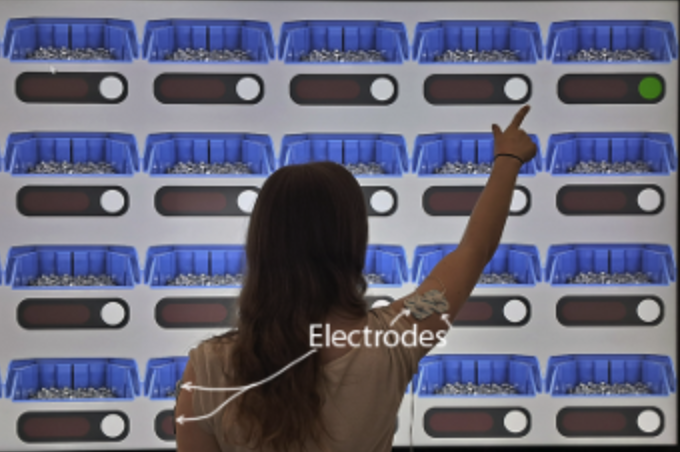 | : ShoulderTapper: Providing Directional Cues through Electrotactile Feedback for Target Acquisition in Pick-by-Light Systems. In: Proceedings of the 23rd International Conference on Mobile and Ubiquitous Multimedia (MUM’24), ACM, New York, NY, USA, 2024. |
DangAR: Prototype of a Collaborative Augmented Reality System for Creating Danger Zones and Real-Time Collision Detection in Industrial EnvironmentsForthcoming
In industrial settings, interacting with machinery poses safety risks. Traditional safety measures, such as physical barriers and warning signs, are often static and inadequate in such settings. We present DangAR, an augmented reality system for real-time collision detection and prevention in industrial environments. DangAR allows for the definition of hazard zones using an augmented reality application and provides real-time collision prediction and collision detection between workers and machinery. The system leverages cloud anchors for collaborative danger zone marking and employs a headless game engine for collision detection. Alerts are communicated via an event broker to a dashboard and wearable devices, enhancing situational awareness and enabling proactive safety measures. DangAR is envisioned for various industrial scenarios, including manufacturing, construction, and logistics.
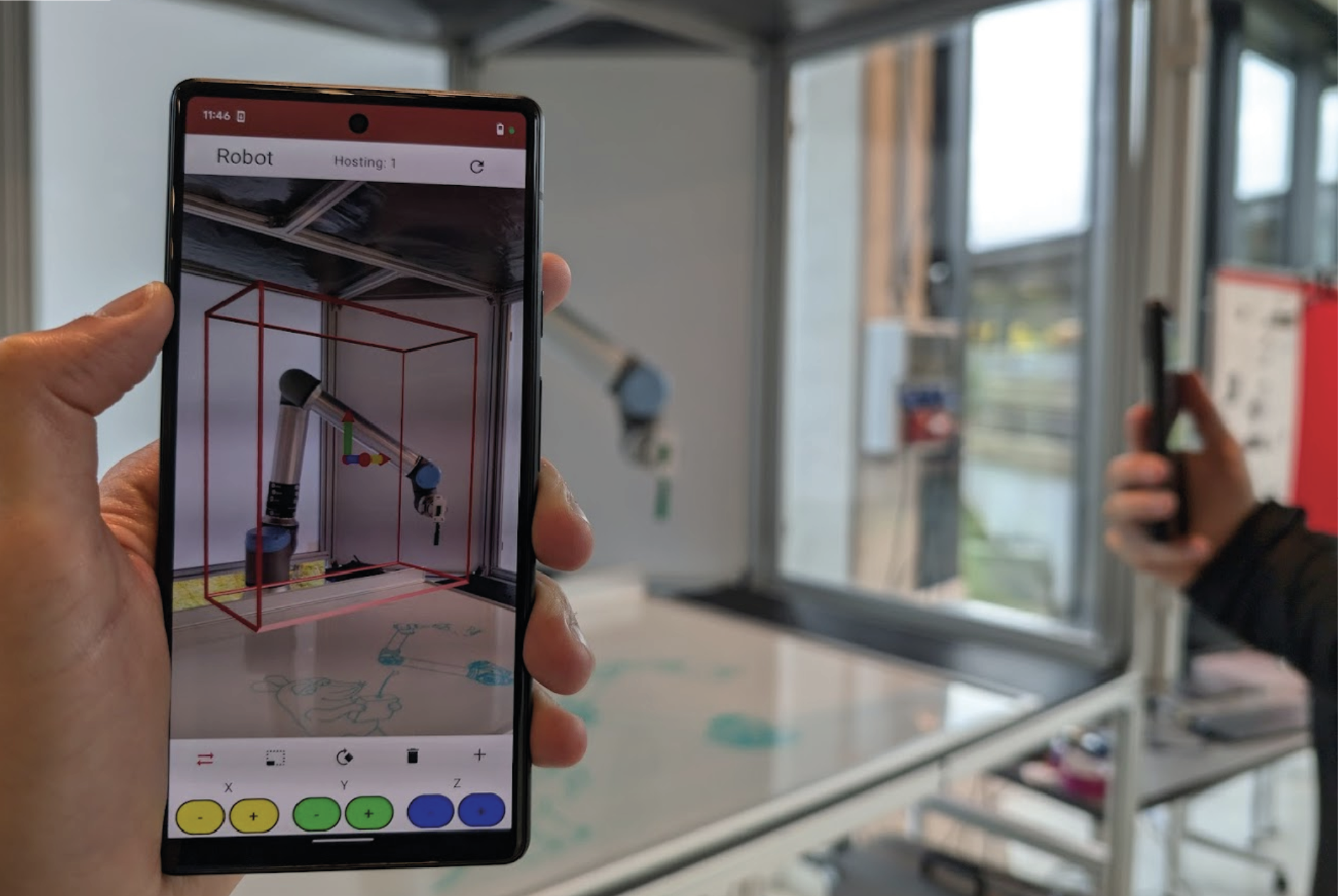 | : DangAR: Prototype of a Collaborative Augmented Reality System for Creating Danger Zones and Real-Time Collision Detection in Industrial Environments. In: Proceedings of the 23rd International Conference on Mobile and Ubiquitous Multimedia (MUM’24), ACM, New York, NY, USA, 2024. |
PalPalette: Sharing Photo-Extracted Color Palettes with a Pal for Ambient CommunicationForthcoming
Maintaining connection and communication across long distances can be challenging for friends. Traditional methods such as texting or video calls may sometimes feel too direct or intrusive. To offer a more subtle approach, this paper introduces PalPalette, a prototype system aiming to subtly share personal moments and foster a sense of connection despite physical separation. The prototype consists of illuminated modular light panels, a microcontroller, a gateway service, and a smartphone app. It works by extracting a color palette from photos taken via the smartphone app, transmitting it to friends through the service, and adjusting the lighting on the panels via the microcontroller, to reflect the friend’s environment. The results of a preliminary usability study with 14 participants indicate that the PalPalette prototype demonstrates good usability, and open feedback suggests its potential to provide an effortless and lightweight medium for communication.
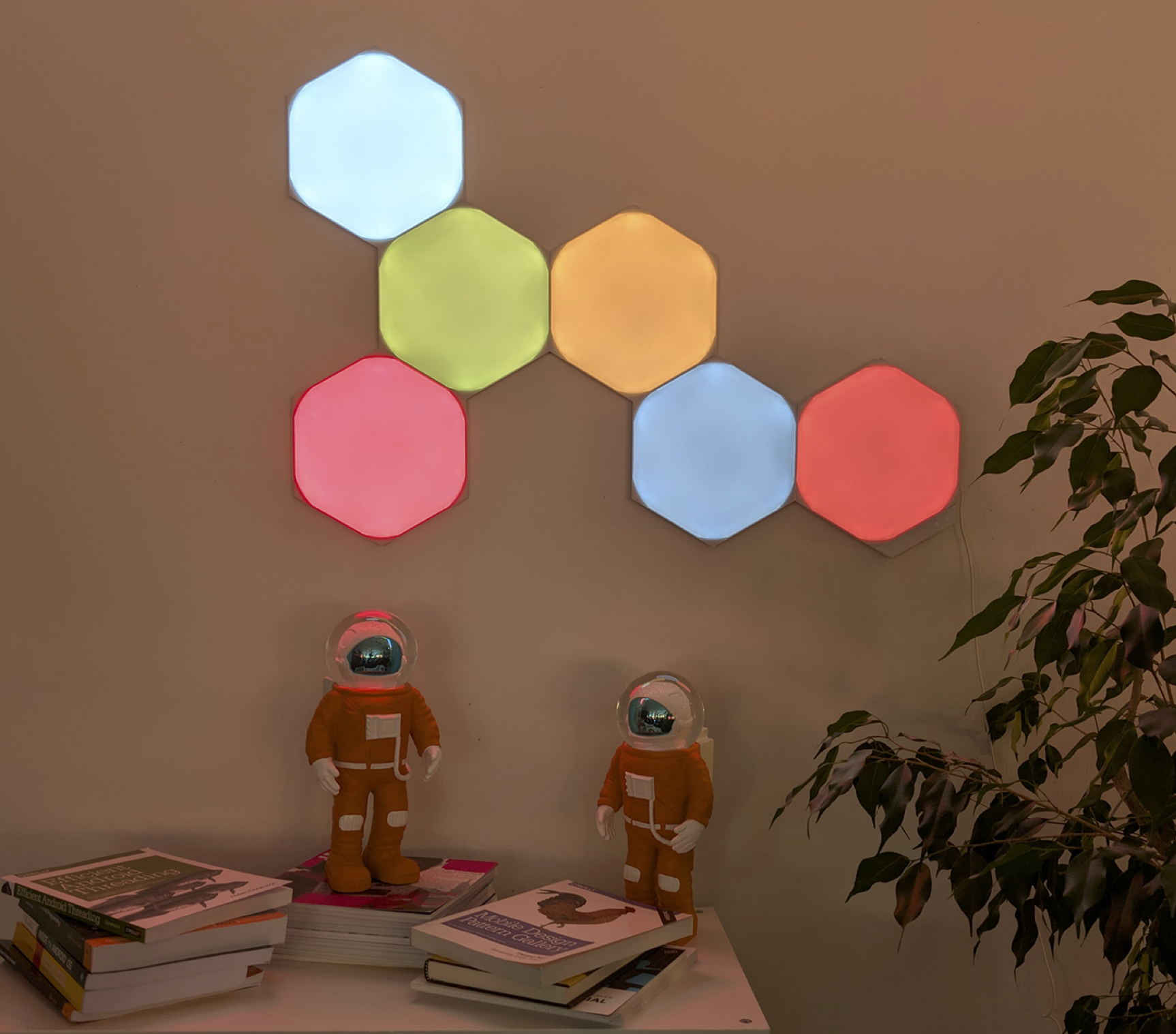 | : PalPalette: Sharing Photo-Extracted Color Palettes with a Pal for Ambient Communication. In: Proceedings of the 23rd International Conference on Mobile and Ubiquitous Multimedia (MUM’24), ACM, New York, NY, USA, 2024. |

